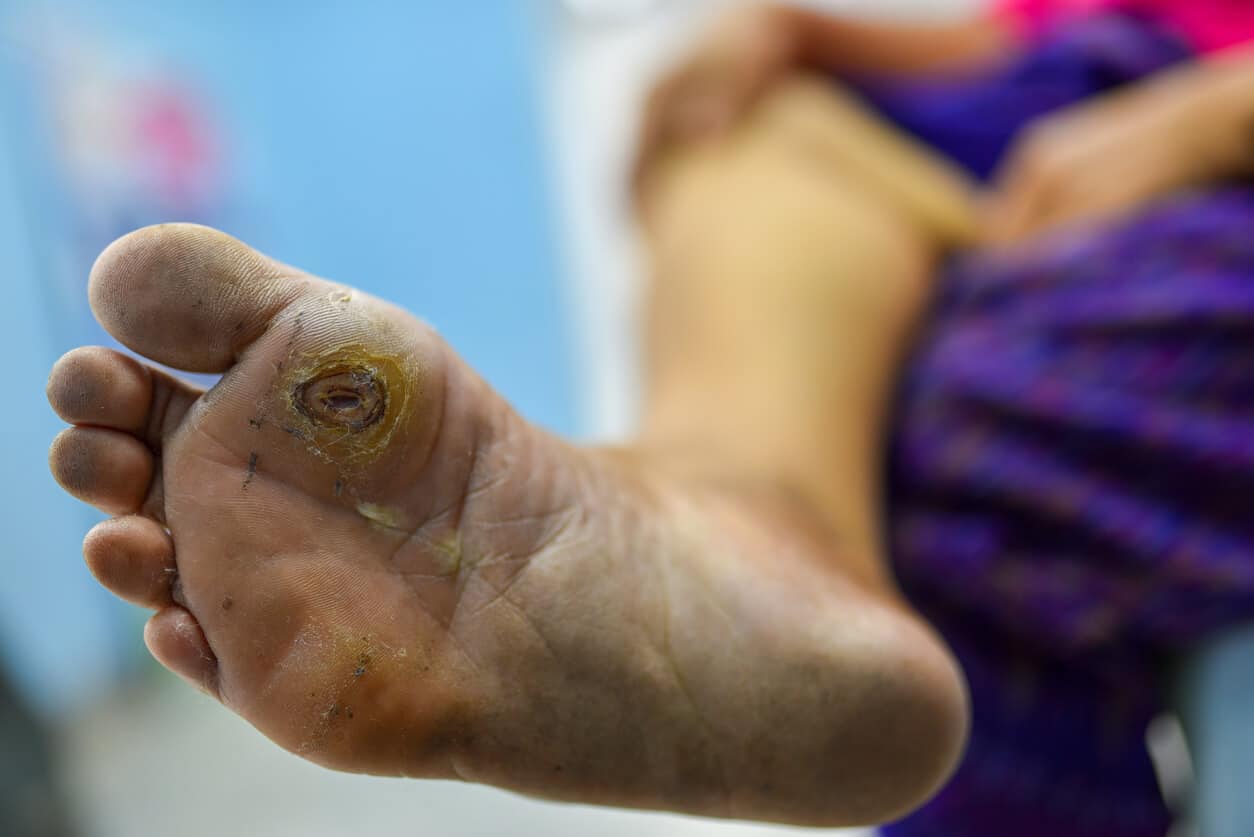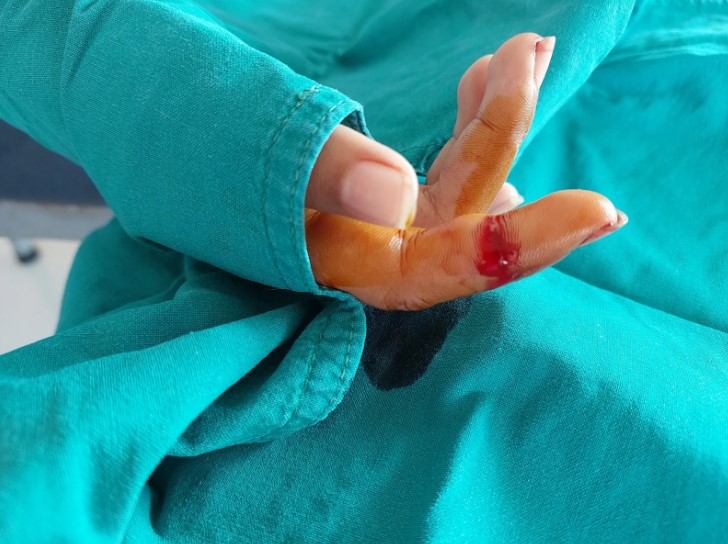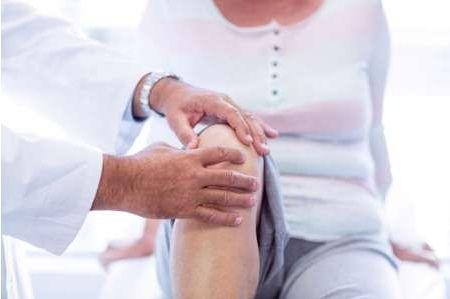Diabetic gangrene is a serious and often life-threatening condition that occurs when tissue dies due to a lack of blood flow and severe infection. In people with diabetes, prolonged high blood sugar damages blood vessels and nerves, creating an environment where wounds do not heal properly. Once circulation is impaired, even a small cut, blister, or infection can escalate into gangrene. This condition most commonly affects the feet and toes, but it can develop in any area with poor blood supply. Orthopedic treatment for diabetic gangrene plays a vital role in addressing not only the infected tissue but also the underlying musculoskeletal issues that contribute to complications. Understanding this condition early is essential because delayed treatment increases the risk of amputation. By recognizing its seriousness, patients and caregivers can take immediate steps to seek the right orthopedic interventions that improve outcomes.
The Connection Between Diabetes and Orthopedic Complications
Diabetes is not just a disease of blood sugar—it affects multiple systems in the body, including bones, joints, and muscles. Elevated glucose levels damage small and large blood vessels, limiting blood flow to the extremities. Without sufficient circulation, oxygen and nutrients fail to reach the tissues, which is necessary for healing. This environment encourages infections to spread rapidly and prevents bone health from being maintained properly. Orthopedic complications often arise when gangrene extends beyond soft tissues into bone, leading to conditions like osteomyelitis. These complications require specialized orthopedic expertise because standard wound care is not enough when the bone is compromised. This direct link between diabetes and musculoskeletal health highlights why orthopedic treatment for diabetic gangrene is an essential part of comprehensive care. Patients who manage diabetes must be especially vigilant about orthopedic risks that come with long-term blood sugar imbalance.
Recognizing the Early Warning Signs of Gangrene
Catching diabetic gangrene at an early stage is critical in preventing extensive damage. The first signs often include changes in skin color, where the affected area may turn pale, bluish, purple, or black. A foul odor may develop due to tissue decay, while swelling and fluid discharge are also common. Some patients may experience numbness or tingling in their feet, a symptom of diabetic neuropathy that can mask pain even when severe damage is occurring. In some cases, patients might notice persistent wounds that simply refuse to heal despite treatment. These warning signs should never be ignored, as they indicate circulation and tissue health are severely compromised. Orthopedic specialists emphasize that prompt medical attention can make the difference between saving a limb or requiring amputation. Recognizing symptoms early helps patients access orthopedic treatment for diabetic gangrene before the condition progresses to advanced stages.
Diagnostic Methods in Orthopedic Care
Orthopedic treatment begins with accurate diagnosis to determine the extent of gangrene and bone involvement. Physicians use imaging tools such as X-rays, MRI, and CT scans to detect whether the infection has spread to bones and joints. Laboratory tests, including blood cultures and tissue samples, help identify the specific bacteria causing the infection, ensuring that the right antibiotics are prescribed. Vascular assessment is another critical step since circulation must be evaluated to determine whether surgical intervention or vascular procedures are necessary. Orthopedic doctors often collaborate with vascular specialists to ensure comprehensive care. These diagnostic methods provide a full picture of the severity of gangrene, guiding surgeons in planning the most effective treatment approach. Without these diagnostic steps, patients may not receive targeted treatment that addresses both soft tissue and skeletal health. Timely and accurate diagnosis significantly improves the chances of preserving function and preventing permanent disability.
Orthopedic Treatment Options for Diabetic Gangrene
When diabetic gangrene is diagnosed, orthopedic specialists use a range of treatment options depending on severity. Surgical debridement is often the first step, where dead tissue is carefully removed to prevent infection from spreading. Orthopedic wound dressings and advanced wound care techniques are then applied to support healing. In cases where bone infection is present, orthopedic implants or external fixation devices may be used to stabilize the affected area while treatment continues. Hyperbaric oxygen therapy can also be integrated into care, improving oxygen delivery to tissues and accelerating recovery. These treatments are highly individualized because every patient’s condition is unique, and orthopedic surgeons evaluate both infection control and functional preservation. The ultimate goal of orthopedic treatment for diabetic gangrene is not only to save the limb but also to restore as much mobility and independence as possible. With proper intervention, many patients can regain function and avoid major amputation.
Limb-Salvage Procedures in Orthopedic Surgery
Limb-salvage procedures represent one of the most advanced areas of orthopedic treatment for diabetic gangrene. These techniques focus on preserving as much of the limb as possible while removing diseased tissue. Reconstructive surgeries, including bone grafting, skin grafts, and flap surgeries, are performed to rebuild damaged areas. Orthopedic surgeons also use microsurgical techniques to restore blood supply and improve healing potential. However, in some cases where infection and tissue loss are too extensive, amputation becomes the only safe option. While amputation is difficult, modern orthopedic rehabilitation allows patients to regain mobility using prosthetics and physical therapy. These procedures require careful planning and collaboration between orthopedic surgeons, vascular teams, and rehabilitation specialists. By focusing on limb preservation whenever possible, orthopedic treatment offers patients the best chance of maintaining function, reducing disability, and improving quality of life.
Multidisciplinary Approach in Treating Diabetic Gangrene
Orthopedic treatment for diabetic gangrene is rarely managed in isolation—it requires a collaborative approach. Orthopedic surgeons work closely with vascular specialists, endocrinologists, infectious disease experts, and wound care teams. This multidisciplinary strategy ensures that not only the gangrene is treated but also the underlying causes such as poor circulation and uncontrolled blood sugar. Physical therapists play a vital role in rehabilitation, helping patients regain strength and function after surgery. Psychologists and support groups may also be involved since the emotional impact of diabetic gangrene can be overwhelming. This combined expertise offers patients a higher chance of recovery and reduces the risk of recurrence. Such an approach highlights the importance of comprehensive care rather than focusing on a single treatment method. By working together, specialists create individualized care plans that address every aspect of the patient’s health and well-being.
Preventive Orthopedic Care for Diabetic Patients
Prevention is always better than treatment, especially when it comes to diabetic gangrene. Orthopedic specialists emphasize the importance of daily foot inspections to detect small wounds before they worsen. Proper footwear designed for diabetic patients can reduce pressure points and protect vulnerable areas from injury. Blood sugar control is essential to maintaining circulation and reducing the risk of infections. Lifestyle modifications, including a balanced diet, regular exercise, and smoking cessation, significantly lower the chances of developing gangrene. Orthopedic check-ups should also be scheduled regularly for diabetic patients who are at higher risk. By taking preventive measures seriously, patients can avoid the severe complications that lead to gangrene. Preventive orthopedic care does not just protect the feet and legs—it also preserves mobility, independence, and overall quality of life.
Advanced Innovations in Orthopedic Treatment
Medical advancements are continually improving outcomes for patients with diabetic gangrene. Regenerative medicine, including stem cell therapy, shows promise in enhancing healing and restoring damaged tissues. Orthopedic surgeons are also using advanced implant technologies and biologically active dressings that promote faster recovery. Hyperbaric and negative pressure wound therapies are becoming more refined, offering additional support in tissue regeneration. Digital health tools such as wearable devices can monitor circulation and foot health, alerting patients to early warning signs. Future innovations may allow orthopedic treatment for diabetic gangrene to shift from reactive to proactive, focusing on prevention and early intervention. These developments give hope to patients who once faced limited treatment options. By embracing new technologies, orthopedic care continues to expand possibilities for limb preservation and better long-term outcomes.
Frequently Asked Questions (FAQ)
Can orthopedic treatment reverse diabetic gangrene?
Orthopedic treatment cannot reverse tissue that has already died, but it can stop the spread of gangrene and help preserve as much healthy tissue as possible.
How do orthopedic surgeons decide between limb salvage and amputation?
The decision depends on the extent of infection, circulation levels, and the overall health of the patient. Surgeons always prioritize limb salvage if it is safe and feasible.
What lifestyle changes reduce the risk of gangrene recurrence?
Maintaining good blood sugar control, wearing proper footwear, exercising regularly, and avoiding smoking all reduce the risk of recurrence.
Is diabetic gangrene always painful?
Not always. Because many diabetic patients suffer from neuropathy, they may not feel pain even when the condition is severe.
How long does orthopedic recovery take after surgery for gangrene?
Recovery time varies depending on the type of surgery, severity of infection, and overall health. It can range from several weeks to several months, especially if rehabilitation and prosthetics are required.











